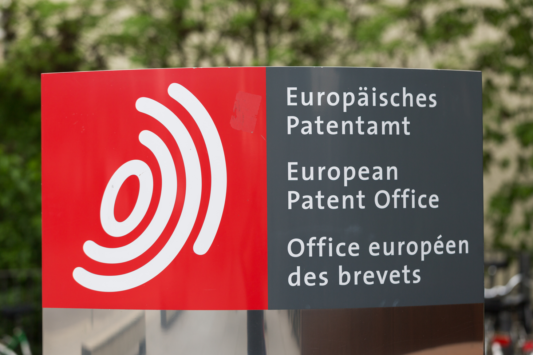Since its launch, the Unified Patent Court (UPC) has rapidly developed a distinctive procedural identity. Among the most significant aspects of this evolving jurisprudence is the Court’s approach to the protection of confidential information through the mechanism of so-called “confidentiality clubs.”

These arrangements—where access to sensitive documents and evidence is limited to specific individuals designated by each party—represent an effort to reconcile the often conflicting imperatives of transparency in judicial proceedings and the legitimate need to safeguard commercially sensitive data.
Drawing on several recently issued orders from both the Court of First Instance and the Court of Appeal, this article aims to provide a doctrinal synthesis of the UPC’s emerging practice on confidentiality clubs.
The analysis focuses on the legal foundation, the principles guiding the composition of such clubs, the standards applied when deciding on access requests, and the implications for parties and interveners alike.
1
Legal Foundation: Article 58 UPCA and Rule 262A RoP
The statutory basis for confidentiality clubs within UPC proceedings lies in Article 58 of the Agreement on a Unified Patent Court (UPCA) and Rule 262A of the Rules of Procedure (RoP).
Article 58 empowers the Court to restrict the collection, use, or disclosure of evidence where necessary to protect trade secrets, personal data, or other confidential information. Rule 262A builds upon this provision by allowing parties to request specific orders to restrict access to sensitive material, whether contained in pleadings, evidence, or oral submissions.
This framework is informed by the EU Trade Secrets Directive (Directive (EU) 2016/943), particularly Article 9(3), which instructs courts to ensure that protective measures are proportionate and do not undermine the fundamental right to a fair trial.
In its order in UPC_CFI_355/2023 (Fujifilm v. Kodak), the Düsseldorf Local Division emphasized this balance:
“The court has to weigh the right of a party to have unlimited access to the documents contained in the file, which guarantees its fundamental right to be heard, against the interest of the opposing party to have its confidential information protected.”
Thus, the confidentiality club regime within the UPC is not a mechanism of secrecy for its own sake, but a judicially-managed system designed to protect sensitive information while respecting the procedural rights of the opposing party.
2
Minimum Composition:
A Natural Person from Each Party
A defining feature of the UPC’s doctrine on confidentiality clubs is its commitment to ensuring that at least one natural person from each party has access to the restricted information.
Rule 262A.6 of the RoP states this explicitly, and the case law confirms that it is not merely aspirational, but a requirement derived from the right to a fair trial.
This principle was articulated with clarity in Fujifilm v. Kodak:
“At least one natural person from each party and the respective lawyers or other representatives are to be granted access in order to ensure a fair trial.”
This case law reflects a fundamental procedural value: that parties must be able to participate meaningfully in litigation that may determine their rights, and this is impossible if access to key evidence is confined exclusively to external counsel.
In UPC_CFI_457/2023 (Dolby v. HP), the Düsseldorf Local Division addressed the question of whether employees of an intervener (Access Advance in this case) could be excluded from the confidentiality club. The Court answered firmly in the negative:
“The intervener is treated as a party pursuant to R. 315.4 RoP. Consequently, Rule 262A.6 RoP also applies to it. The intervener therefore has the right to ensure that the group of persons entitled to access information classified as confidential includes at least one natural person in addition to their legal representatives.”
This is particularly important in patent pool litigation, where interveners such as Access Advance act on behalf of numerous rights holders and must participate meaningfully in the dispute.
3
Exceptions to the Rule: Agreement of the Parties
While the minimum access rule is robust, the UPC has shown a pragmatic flexibility where the parties themselves agree to waive this requirement.
In UPC_CFI_397/2023 (C-Kore v. Novawell), the Paris Local Division considered an unusual arrangement: both parties agreed to exclude any natural persons from the confidentiality club, allowing only external representatives.
The Court accepted this proposal, holding:
“Even though Rule 262A RoP provides that the confidentiality club shall include at least one natural person from each party, the Court considers that it is possible for the parties to exclude access by a natural person by mutual agreement, provided that the principle of a fair trial is not affected.”
This illustrates that the UPC will not impose rigid procedural formality where the parties have found a mutually acceptable solution—provided, crucially, that the agreement does not undermine the integrity of the proceedings or prejudice either party’s right to be heard.
4
Eligibility Criteria: Role and Trustworthiness Prevail
A landmark clarification of who may be admitted to a confidentiality club was delivered in the Court of Appeal’s ruling in UPC_CoA_621/2024 (Daedalus v. Xiaomi).
The Court reversed a decision of the Hamburg Local Division, which had denied access to two U.S. attorneys on the ground that they were not UPC-authorized representatives or employees of Daedalus.
The Court of Appeal held:
“R. 262A.6 RoP does not require that the person to whom access is given be an employee of a party or a representative within the meaning of Art. 48 UPCA. Such a requirement does not follow from the wording of the provision and would unduly restrict a party’s freedom to choose its assistants in the proceedings.”
Crucially, the Court found that these attorneys were directly involved in the UPC litigation—not merely in parallel U.S. proceedings—and that their technical expertise was indispensable to Daedalus’s case.
The Court emphasized that the overriding considerations should be the relevance of the person’s role and their trustworthiness in handling sensitive information.
This decision confirms that the UPC’s approach to confidentiality clubs is functional, not formalistic.
What matters is whether access is necessary for effective participation in the litigation—not the professional label attached to the individual.
5
Weighing Competing Interests:
The Fair Trial as a Guiding Principle
When determining whether to grant a confidentiality order and how to structure the club, the UPC conducts a nuanced balancing exercise. It assesses the risk of harm to the applicant if confidentiality is not preserved, against the risk of unfairness to the opposing party if access is limited.
This balancing is not theoretical. In Fujifilm v. Kodak, the Düsseldorf court refused to accept vague justifications based solely on the competitive relationship between the parties
“A party seeking protection for confidential information has […] to put forward sufficiently substantiated arguments […] The court has to be put in a position to understand, why the applicant believes that the concrete information to be protected is vulnerable and confidential.”
Only once such justification is provided does the court proceed to weigh the protection of the data against the right to be heard.
6
Implementation Measures and Technical Safeguards
Beyond deciding who may access confidential material, UPC divisions have elaborated operational protocols for handling it securely. Orders have included:
- Restricting access to digital data rooms with watermarking, view-only access, and print control.
- Requiring hard copies to be physically secured and returned or destroyed post-trial.
- Imposing obligations on the receiving party to limit internal dissemination strictly to named individuals.
- Allowing time delays before access to give opposing parties an opportunity to challenge designations.
These mechanisms were referenced in Dolby v. HP and further detailed in Fujifilm v. Kodak, where the Court approved access to nine named individuals and included stringent handling protocols.
Additionally, UPC is mindful of ensuring compliance through proportionate enforcement. A pertinent example is provided in the procedural order issued by the Paris Local Division in UPC_CFI_230/2023 (Abbott v. Dexcom).
In that case, Abbott requested a review of a prior confidentiality order that had set the maximum fine for breach at €50,000 per incident. Abbott argued that this was inconsistent with a similar order in parallel proceedings before the Munich Local Division, which had set the limit at €250,000. They sought harmonisation of the penalty amount across UPC divisions.
However, the Court rejected this request, noting:
“The judge rapporteur considered the amount of the fine requested in the event of a breach of the confidentiality arrangements, i.e. up to EUR 250,000 for each individual case of breach, to be disproportionate, given that a significant part of the information had already been disclosed in the previous national proceedings in Germany […] Therefore, a maximum fine amount of EUR 50,000 in case of breach is appropriate and proportionate in the contested confidentiality order.”
The Court further affirmed its independence from parallel rulings in other divisions, underlining that each panel retains discretion to assess proportionality based on the specific context of its case.
This procedural order demonstrates that the UPC enforces confidentiality obligations seriously, but with careful attention to fairness, factual context, and judicial consistency. It also confirms that the Court does not apply a “one-size-fits-all” rule across divisions—even in related proceedings.
Conclusion
The UPC’s jurisprudence on confidentiality clubs reflects a sophisticated balancing of competing interests. While sensitive business and technical information is clearly protected, the Court remains vigilant to ensure that such protections do not erode the right of parties to a fair and effective defense.
Three principles emerge from the case law:
- Transparency cannot be sacrificed entirely. Even in the most sensitive cases, at least one natural person must generally have access.
- Function matters more than form. Eligibility for access depends on role and trust, not on formal employment status.
- Protective measures must be tailored. Blanket restrictions or generic justifications will not suffice. Instead, the Court expects parties to provide detailed, contextualized explanations.
The practice of confidentiality clubs at the UPC is still developing, but the case law to date provides a clear, principled foundation.
Practitioners appearing before the Court can internalize these emerging standards and prepare their confidentiality applications accordingly.
October 2025
Table of Cases
- UPC_CFI_355/2023 – *Fujifilm v. Kodak* – Düsseldorf Local Division, 27 March 2024. Assessed balance between confidentiality and fair trial. Required specific justification for redactions.
- UPC_CFI_397/2023 – *C-Kore v. Novawell* – Paris Local Division, 26 March 2024. Allowed mutual agreement to waive natural person access in confidentiality club.
- UPC_CFI_457/2023 – *Dolby v. HP* – Düsseldorf Local Division, 22 July 2024. Confirmed intervener’s right to be included in confidentiality club under Rule 262A.6 RoP.
- UPC_CoA_621/2024 – *Daedalus v. Xiaomi* – Court of Appeal, 12 February 2025. Held that non-UPC, non-EU attorneys may access confidential material if relevant and trustworthy.
- UPC_CFI_230/2023 – *Abbott v. Dexcom* – Paris Local Division, 30 January 2024. Procedural order under Rule 333 RoP. Reduced fine for breach of confidentiality club from €250,000 to €50,000 due to prior national disclosures.



